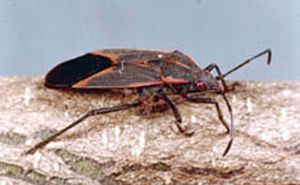Sightings surge, but stink bug look-alikes abound
Published 3:53 pm Monday, October 14, 2013

- <p>Boxelder, a stink bug look-alike</p>
A destructive stink bug may be more entrenched in the area than previously thought, though it may not survive the winter.
News about the discovery of the brown marmorated stink bug in a Hermiston caltalpa tree touched off a flood of sightings around the area. The exotic pests use their hypodermic-like mouths to suck out the insides of fruit, vegetables and leaves. They have damaged orchards and field crops in places such as New York and Ohio and hit the Willamette Valley several years ago.
Last month, they showed up in an east Hermiston neighborhood.
Silvia Rondon, an entomologist at the Hermiston Agricultural Research and Extension Center, said the public reacted to news of the bug by searching their yards and gardens. Rondons office fielded about a dozen calls a day since an East Oregonian stink bug story ran last Tuesday.
We have received many, many, many phone calls and emails people from Echo, Irrigon, Umatilla, Hermiston and Stanfield telling us they found the insect, Rondon said.
Two calls came from the Tri-Cities area.
Rondon said it will take some time to confirm sightings of the shield-shaped bug.
All the phone calls are extremely helpful, but we have to make sure they are not look-alikes, she said.
Possible look-alikes include the boxelder bug, consperse stink bug and the rough stink bug. Since the initial discovery, Rondons team located more stinkbugs in east Hermiston neighborhoods as they methodically search catalpa trees and English holly. The ravenous stink bugs also consume apples, pears, peaches, cherries, berries, grapes, corn, beans, peppers, tomatoes and numerous other plants.
Duane Sidebottom said he started noticing stink bugs on 12 tomato plants in his Umatilla yard last July. Before long, yellow spots appeared where the bugs had pierced the tomato skin. When he cut them open, the tomatoes were white inside and the bugs had sucked out the juice.
I sprayed with Ortho Bug Be Gone and it helped a little, he said. I might start spraying earlier next year.
Rondon said her team will monitor the bug through the winter. She is hopeful even though the insects have easily weathered cold northeast winters.
I dont expect them to survive here because its so dry, she said.
Stink bugs normally seek warm spots to sleep off the winter. They snuggle up together in large groups on the sides of houses and under eaves. Rondon said fellow entomologists have noticed stink bugs clinging en masse to homes in Portland this fall.
This is the first confirmed aggregation in the Portland metropolitan area of hundreds and hundreds of bugs, she said. They have also noticed mixed populations of stink bugs and boxelder bugs. This is new and bizarre weve never seen this before.
The OSU scientist is helping with a national effort to control the stink bugs. Pesticides havent worked well, so researchers are considering some creative biological possibilities such as the use of parasitic wasps.
Adult brown marmorated stink bugs are flat and drab with smooth shoulders and banding around the abdomen and antennae. They produce a rotten cilantro-like odor if disturbed.
Those willing to send Rondon dead stink bugs for identification should put them in vials with tight-fitting lids and send or take them to the extension center at 2121 South First St. in Hermiston. If possible, fill out an insect identification form found on the OSU Extension Service website (http://extension.oregonstate.edu/) and supply information about where the bug was discovered.
Contact Kathy Aney at kaney@eastoregonian.com or 541-966-0810.









